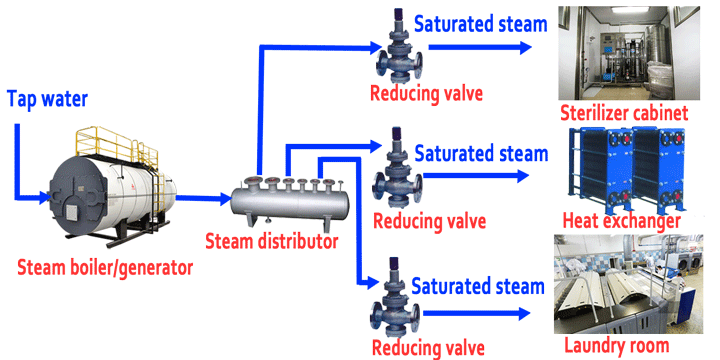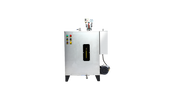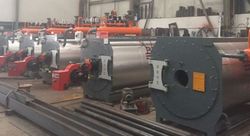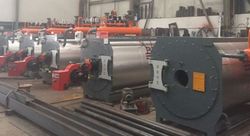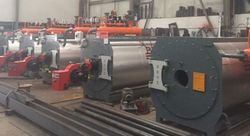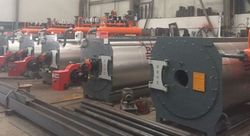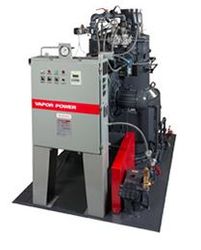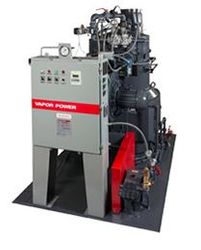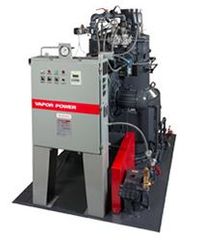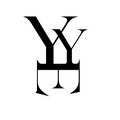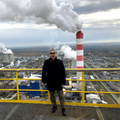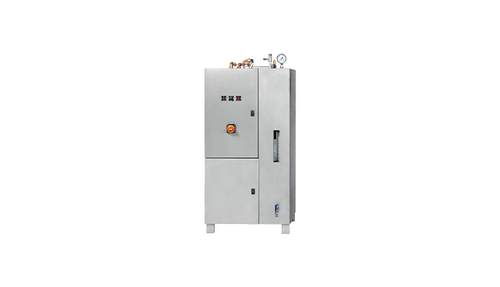
What is Steam Generator? Working Principle & Function
Like a flash steam boiler, a Steam Generator is a low water-content boiler. The typical design consists of a single, or monotube, coil of a spiral water-tube. Similar to a forced-circulation boiler, the circulation is done only once and is pushed under pressure. Due to their narrow-tube design and lack of large-diameter drums or tanks, they are safe from explosion even when operated at high pressures. The pump flow rate may be changed depending on how much steam is needed at the moment. In order to keep the operating temperature constant, the burner output is throttled. The amount of burner output needed changes depending on how much water is being evaporated; this can be changed either by a closed-loop control to maintain the observed temperature or by an open-loop control to vary according to the pump throughput. Linquip recognizes the need to identify and respond to qualified and reputable Steam Generator service providers. As a result, to suit these demands, we've prepared a comprehensive list of verified Steam Generator Service Providers categorized by geographic location. Unfired steam generators use hot water or steam as its energy source to create clean steam. The steam generators are appropriate for food processing, humidification, sterilization, and clean steam applications. Linquip can help you locate a variety of Steam Generator service providers. If you want your Steam Generator to last for many years to come, you need to take care of it properly. Based on your geographical area, the Linquip platform provides a broad number of Steam Generator Service Providers who can meet all of your needs.
Need industrial equipment, parts, or services? Submit an RFQ and get quick quotes.
Get a QuoteNeed industrial equipment, parts, or services? Submit an RFQ and get quick quotes.
Get a QuoteSteam Generators Subcategories
Top Companies in Steam Generators
Top Devices in Steam Generators
Top Steam Generators Experts
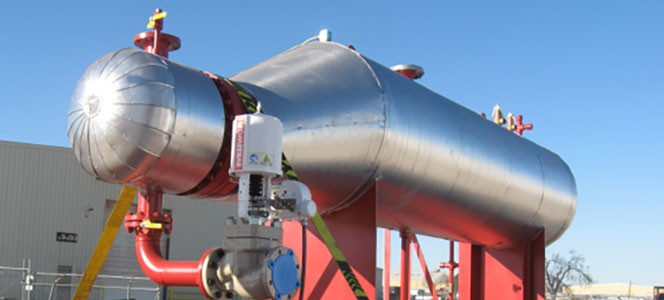
What is Steam Generator?
Like a flash steam boiler, a steam generator is a low water-content boiler. The typical design consists of a single, or monotube, a coil of a spiral water-tube. Similar to a forced-circulation boiler, the circulation is done only once and is pushed under pressure. Due to their narrow-tube design and lack of large-diameter drums or tanks, they are safe from explosion even when operated at high pressures. The pump flow rate may be changed depending on how much steam is needed at the moment. In order to keep the operating temperature constant, the burner output is throttled. The amount of burner output needed changes depending on how much water is being evaporated; this can be changed either by a closed-loop control to maintain the observed temperature or by an open-loop control to vary according to the pump throughput.
You can find various Generator Suppliers and Companies in Linquip that can completely cover your requirements. You are also encouraged to visit the List of Generator Distributors in Linquip. You are also highly encouraged to visit our Generator Services to inspect all requirements for your valve operation and maintenance.
Steam Generator Working Principles
Heat Exchange
The energy released as heat in a number of activities is captured and transformed into more usable forms, such as mechanical and electrical energy, using steam generators. The heat that is used is frequently created on purpose to generate energy or is collected as a byproduct of another industrial operation. The initial phase of steam power generation is to convert the heat into clean water using a heat exchanger because the direct source of the heat is typically unclean, such as the radioactive fuel in a nuclear power plant. This is accomplished by raising the temperature of an exchange medium—such as oil—that is circulated in a closed circuit using the heat source. In turn, the oil warms a water reservoir without tainting it.
Steam Generation
To create steam, the heated oil is pumped through a water bath. The logic for achieving this is the same regardless of the many geometrical schemes used. The liquid that is heating is redirected into a number of smaller pipes to improve its surface contact with the water, promote quick heat transfer, and enable the formation of steam. Modern nuclear and coal power facilities frequently produce steam at supercritical temperatures or above the critical point of water's phase diagram (374 degrees Celsius and 22 MPa).
Conversion of Heat to Electricity
The energy content of supercritical steam is excessive. Steam is forced through a steam turbine, where its energy is transformed into mechanical energy. The turbine's numerous inclined blades are pushed by the steam's intense pressure, which rotates the shaft. By employing the force from the spinning shaft to operate an electrical generator, this mechanical energy is transformed into electrical energy. The turbine being constructed in the photograph has a 65-megawatt capacity.
Steam Generator Function
Functional characteristics of steam generator:
Better working conditions: No fire overflow, complete heat absorption by the tank, 90% reduction in radiation temperature. They are decreasing kitchen temperature while conserving energy.
Easy operation: Simple controls include a one-button start, automatic electrical ignition, anytime opening or closing, and automatic water flow.
Rapid steam production: Water heated to room temperature may create steam within 120 seconds.
Low noise: Compared to the conventional forced air type, using the negative pressure-induced air manner resulted in a noise reduction of more than 60%, which was lower than the national norm.
Lowering emissions: CO emissions are just 0.009%, or 11 times less than the national standard of 0.1%.
Energy saving: a 50% reduction in energy use.
It's easier to handle the tank scale: Two drainage pipes in a unique design that is simple to clean.
Working medium: The water is safe, wholesome, practical, and desired because it comes from the customer's flowing water.
Atmospheric steam: This product is not a pressure vessel, thus it doesn't require special use permission, a dedicated space, a yearly inspection, a manned inspection, or a special guard.
Diversification of steam power: Choose from a variety of models that may provide a range of power to suit the demands of different sectors.
Steam Generator Application & Design
Applications of Steam Generators are as the following:
- Large and medium-sized hotels and the catering sector (used to transform its traditional steaming cabinets, dim sum steaming stoves, etc.)
- processing food (flour, meat processing, bean products, etc.)
- Process pharmaceuticals (Chinese herbal medicine in the pot, boiled, steamed, disinfection, etc.)
- Unit cafeteria (schools, government departments, hospitals, etc.)
- Disinfection and sanitization (tableware, medical equipment, food utensils disinfection, disinfection of high-temperature steam farms).
- Spa sauna (steam sauna and supplies disinfection)
- To address the environmental issue, agricultural greenhouses are used to heat and humidify plant seed production.
